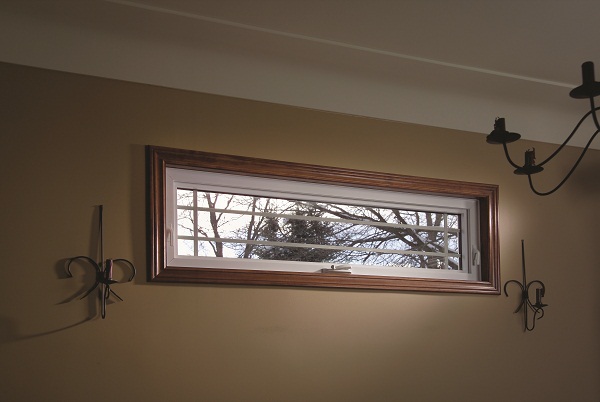Condensation Information

What is Condensation?
Condensation is the passing of a substance from a lighter to a denser physical state. In this instance, water passes from a gaseous (vapour) state to the denser liquid one. Because it is caused by too much humidity, condensation is also the symptom of a more serious problem – excessive moisture at work in your home’s atmosphere.
In seeking cooler, drier outside air, water vapour exerts pressure and forces its way through most building materials. Wood, brick, and drywall are too porous to stop moisture from migrating to the outside. But because window glass is denser and its surface colder than the surrounding walls, vapour is stopped by glass and condenses on it. While glass – the coldest, least porous (and most visible) material in a building – may show condensation first, it may also be noticed on exposed nail heads and other metal surfaces.
Why Does Condensation Occur?
Problems arise because air can hold only a limited amount of water vapour, varying with the temperature. Condensation is related to two conditions always present in the atmosphere inside your home. It is likely to form whenever there is an improper balance between:
Relative Humidity
A ratio between the water vapour in the air compared to the maximum amount that air can hold at a given temperature. For example, 50% means the air is carrying 1/2 of the total water vapour it is capable of holding at that temperature.
Temperature
A particular temperature where the relative humidity becomes 100%, called the “dew point” (see chart). At the dew point, the air is saturated with moisture and begins to lose it in the form of condensation.
| Relative Humidity | Dew Point (Celsius) |
| 20% | -4° |
| 30% | 2° |
| 40% | 6° |
| 50% | 10° |
* Note: A new home has significant quantities of moisture because of the water used in various areas of construction (700 gallons of water are used in plastering alone for a sixroom house). This will be eliminated after a period of time.
Where Does Condensation Occur?
In practice, condensation will occur first over the lower part of
the window because glass surface
temperatures are not uniform, being lower at the bottom than at the
top. Windows with a metal sash usually have more severe problems at the
base and sides. Occasionally, it may occur on cold spots, such as nail
heads and in corners of outside walls and closets where insulation
value is reduced.
Sources of Moisture
The humidity level in a house during the winter will depend on both the moisture added to the air through family living habits (see chart) and the rate at which this moisture is removed by ventilation or condensation.
Quantity of Moisture Added to the Air Through Normal Household ctivities
| Activity (for a family of four) | Moisture in Litres each week |
| Cooking (3 meals/day for 1 week) | 6.3 |
| Dishwashing (3 times/day for 1 week) | 3.2 |
| Bathing (.2 litres per shower)(.05 litres per bath) | 2.4 |
| Clothes washing | 1.8 |
| Clothes drying indoors, or using an unvented dryer | 10 |
| Floor mopping (per 9.3m) | 1.3 |
| Occupants | 38 |
| Total Moisture Production per Week | 63 |
In addition to the above sources of humidity, such things as gas appliances, dryers vented inside, plants (which put out almost as much water as they receive), pets, humidifiers, damp basements, etc., all increase the humidity level in a home.
Solutions and Facts About Humidity
Solutions
- Turn off all humidifiers, particularly in homes with forced-air heating.
- Move plants away from windows (where water vapour will be released directly onto glass).
- Vent the clothes dryer and gas appliances outside.
- not dry firewood indoors.
- Ensure kitchens and bathrooms are well ventilated by windows or exhaust fans.
- Ensure that basement walls are kept as dry as possible since they will act as humidifiers when wet.
- A de-humidifier may have to be installed (Note: a de-humidifier alone cannot eliminate the problem).
- Do not cover windows with heavy curtains since this will restrict air flow over glass.
- Produce less moisture inside the house.
Facts
- Unless indoor humidities are kept below 10%, it is impossible to avoid some condensation.
- Lower outside temperatures require lower inside humidity levels (see chart).
- Electrically heated homes are difficult to rectify because there is very little movement of air.
- Ventilation is generally the most effective means available to reduce humidity and can be done by opening windows, operating exhaust fans and/or installing a ventilator from outside into the cold air return plenum of a forced air heating system
Additional information can be found in the following document. --> Condensation Information
As always, if you have questions please contact North Air Directly at 1 866 295 9236, or contact the North Air dealer nearest you.

